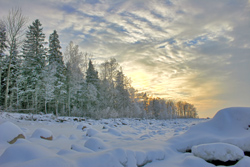Data management for weather measurement
The northwest European climate is rather warmer than expected, scientists note. So much so, in fact, the warm weather is considered an anomaly. Whether polar region warming or elements in the Nordic sea area, scientists seek to understand the various factors involved and their controlling processes. Part of the research involved taking Conductivity, temperature and depth (CTD) profile measurements. During 10 cruises, these measurements were taken over a period from 2003 to 2006 with institutes across Europe participating in the gathering and assessment of these readings. In all cases Sea Bird Electronics' technology was used, employing a profiler with a single CT-Sensor package. However, raw data readings are prone primarily to two sources that present erroneous readings. The first is sensor drift and the latter, noise caused by the ship motion. To reduce these, regular salinity samples were taken to counter the first, and to reduce the noise, data was averaged to a vertical resolution of 1dbar. An additional reading was obtained at regular mooring intervals for reliable current readings. Disseminating the information is as important as collecting it. In this, the project has gone to great lengths to ensure that all partners have secure access to the information. In addition the information is standardised and archived at the Alfred Wegener Institute in Bremen, Germany. This allows data requests to be processed and provided without the customary long waiting periods either for format conversion or for data transfer. The information is accessible to scientists, particularly oceanographers, via the web. An additional benefit is that the database is easily and immediately editable, thus allowing for immediate correction or updating if necessary.



